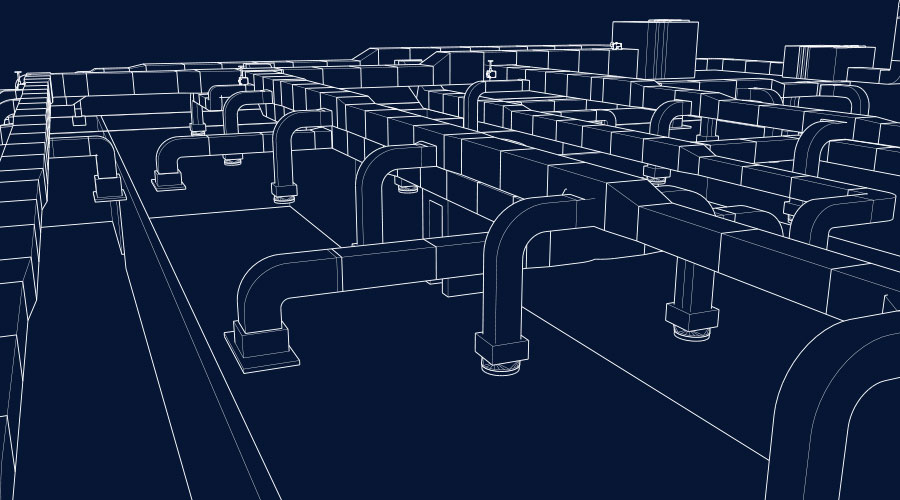BIM Demands Early Building Owner Involvement
The piping problem wasn’t the only time BIM showed its value during the design and construction of the three-story, 160,000-gross-square-foot research facility, which was partially funded by the American Recovery and Reinvestment Act.
Energy modeling software took the BIM and used it to model different geometries of the building as well as different floor plates to identify the most energy efficient options for the building, which is aiming to receive LEED for New Construction certification at the Gold level.
By modeling mechanical, electrical and plumbing systems, the team was able to pre-assemble duct work, piping and conduit materials off-site. That saved a significant amount of time and helped the project finish 6 months ahead of the baseline schedule established by DOE. Joseph estimates that use of BIM reduced requests for information — many of which would have led to change orders — by about 40 percent. And as changes occur, Oak Ridge facility staff now use BIM to determine which labs should move into which spaces in the completed building.
Using BIM forces the owner to make decisions earlier. A good example is owner-furnished casework and fume hoods on the project. Usually, says Joseph, the approach is fairly casual: “‘We’ll give you some shop drawings at some point, but you guys go ahead and start building.’” That won’t work with BIM, where modeling is to within an eight of an inch of tolerance. With accurate information for the model, says Joseph, “every piece of casework that hit the job site fit. We did not reorder any casework.”
BIM isn’t magic. “BIM is a tool,” Joseph says. “Even with BIM, you have to have someone who understands how to use the tool. You can use BIM to model a space, but if you don’t know how to build it, it doesn’t give you a true representation of what it’s going to look like.”
Owner involvement in BIM actually starts before the design even begins. “Owners, architects and contractor really need to have the contract language written so the model is transferred smoothly without a lot of lawyers getting involved,” says Joseph. In the RFP/RFQ process, the owner should specify that it expects to use BIM on the project and wants some level of delivered model. The owner, in the RFP for contractors, specifies that the contractor will receive the model and return it to the owner after construction. “The model for Oak Ridge actually became the as-builts,” says Joseph.
The Chemical and Materials Sciences Building marked the first time that Oak Ridge National Laboratory and the Department of Energy used BIM. Were they satisfied? “Absolutely,” says Joseph. “So much so that they’re putting into their future solicitations.”
Related Topics:












